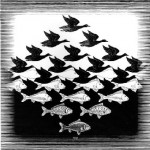The Real Value in Appellate Oral Argument
 Does appellate oral argument still matter? In some courts with exceptionally heavy caseloads, such as the Wisconsin Court of Appeals, oral argument is vanishingly rare. But even in courts that regularly hold oral argument, some observers claim that it has devolved into a dog-and-pony show unlikely to move judges who have already reached unspoken decisions based on often-voluminous briefing.
Does appellate oral argument still matter? In some courts with exceptionally heavy caseloads, such as the Wisconsin Court of Appeals, oral argument is vanishingly rare. But even in courts that regularly hold oral argument, some observers claim that it has devolved into a dog-and-pony show unlikely to move judges who have already reached unspoken decisions based on often-voluminous briefing.
It may surprise some practitioners to learn that certain appellate courts have even taken to issuing “tentative” opinions prior to oral argument. Certain branches of the California appellate courts have been among the leaders in this regard; the web page for the 4th District, 2nd Division claims that “the justices do not sense that their deliberations are any less objective than before the tentative opinion program began” and that “counsel almost unanimously praise the program.”
Proponents of the practice contend that it has several distinct advantages.

 Today California became the first state
Today California became the first state  Some people dislike the game of soccer. They observe the players running around on the field and it all seems like random chaos. Soccer aficionados, however, are not focusing on the players. They are watching the spaces in between the players. These empty spaces ebb and flow, like waves in the ocean, creating momentary opportunities for the attacking side.
Some people dislike the game of soccer. They observe the players running around on the field and it all seems like random chaos. Soccer aficionados, however, are not focusing on the players. They are watching the spaces in between the players. These empty spaces ebb and flow, like waves in the ocean, creating momentary opportunities for the attacking side.